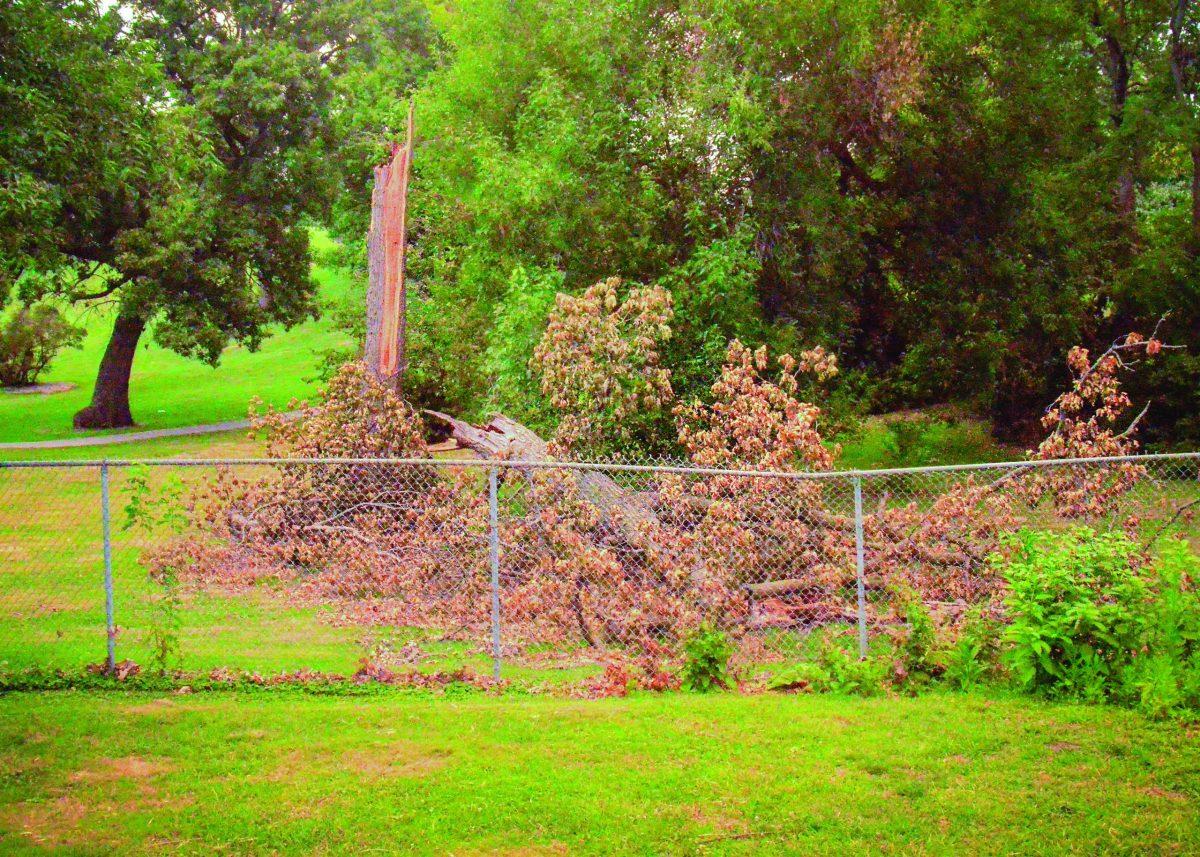While the COVID-19 pandemic remains at the forefront of most Americans’ minds, Iowans are now grappling with the aftermath of another disaster: a devastating derecho. The powerful windstorm, likened to a spontaneous inland hurricane, swept through the Midwest on Aug. 10.
So far, the derecho has claimed four lives, left 2 million without power, and caused billions of dollars in damages. Cedar Rapids endured the worst of the storm, with winds peaking at 140 miles per hour, resulting in the state’s most extensive wreckage.
“There was no power, no internet, no electricity for like three or four days,” said Casey Cerveny, a vocal performance major from the Cedar Rapids area. “Half of our trees were blown away, but the willow managed to survive somehow. The neighbor’s RV got flipped over.”
Although Cerveny’s family regained power, many people are still without electricity and other vital necessities, such as phone service and water.
Breese and Ryan Besser, both juniors at Drake studying music education, recounted similar scenes from the Des Moines area. Breese was outside at work when the sirens started in Des Moines.
“I got stuck on the highway trying to get home and there were big branches flying in the air,” said Breese.
One of the most dangerous qualities of derechos is that they are virtually impossible to predict.
“It was really clear and then all of a sudden there were power lines down and all of the cars were stopped on the highway,” said Ryan.
Gov. Kim Reynolds requested $3.9 billion in federal disaster relief on Aug. 16, six days after the derecho hit central Iowa. President Donald Trump responded to the request via Twitter, saying he approved the Emergency Declaration in full.
However, according to federal emergency management officials, President Trump only granted $45 million of Reynolds’ request. Furthermore, financial relief authorized by the federal government will not be available to homeowners or farmers.
While democratic representatives Abby Finkenauer and Cindy Axne continue to advocate for the speedy aid their communities desperately need, Gov. Reynolds has not vocalized any concerns she may have about the delay of federal relief. Reynolds herself has come under fire for what some consider to be a delayed response to the crisis.
“I think she has a lack of connection to Iowans and does not really understand what they need even though they are telling her very clearly at this point,” said Drake student Elizabeth Kirsner.
The disaster may be over for the time being, but the sheer magnitude of the storm may be indicative of a much deeper problem stemming from climate change in the Midwest. While derechos are not a new phenomenon, the ferocity of the storm was abnormal: the average derecho typically includes wind speeds up to 50-70 mph, while the recent derecho included wind speeds of up to 140 mph.
Kirsner, an environmental sustainability major, views the storm as a bad omen of what’s to come.
“Climate change is so prevalent, and not a lot of people take it seriously,” Kirsner said. “These disasters are going to become much more intense and frequent if we do not change.”
In the wake of the storm, communities across Iowa seem to have recovered from the initial shock, uniting to provide meals and shelter to those most affected. Local nonprofits have also seen an increased need for assistance.
“When the disaster hit, we saw a huge spike in phone traffic and families reaching out to us, not only for disaster assistance but for the other programs we offer as well,” said Hannah Nelsen, community engagement coordinator for IMPACT Community Action Partnership.
IMPACT is currently taking monetary donations via @IMPACTCAP on Venmo, as well as food and personal hygiene donations. For students and community members looking to support fellow Iowans following the crisis, visit the Iowa Derecho Resource page on Facebook.







